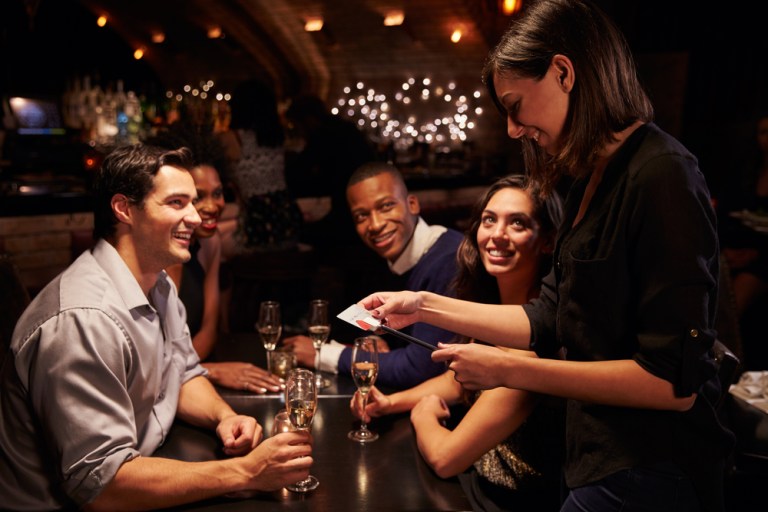
A recent survey by American Express shows that, unsurprisingly, millennials have the biggest appetite for digital dining experiences, from ordering take-out through a mobile app to ordering and paying through a kiosk at their table to tweeting what they’re eating.
But technology isn’t the only facet of the dining experience where millennials are driving change. They also expect socially conscious behavior from the businesses they frequent, such as food waste reduction, use of locally-sourced ingredients, and the inclusion of a service fee on their bill (ensuring higher wages for wait staff) as opposed to a tip.
Here are the results, in brief. For a full report, see the survey summary from American Express.
Take-out tech: 62 percent of millennials and 28 percent of Baby Boomers had ordered take-out through a restaurant’s mobile app or website within the last month. 58 percent of millennials and 21 percent of boomers had used a service like GrubHub. About a quarter of restaurateurs are currently using an online delivery platform and/or a dedicated mobile app or website, while nearly half are considering it.
Tipping: 63 percent of respondents said they preferred being able to tip their server. Millennials were least likely to want to tip, but most likely to support the addition of a service charge to their bills (18 percent, versus only 6 percent of boomers). Around 30 percent of restaurants have either eliminated tipping or would consider doing so if their competitors did it first.
Social media: 25 percent of millennials will post a picture of their meal or drink to social media, and nearly three quarters will post about their dining experience in some form. Recognizing the import of this behavior, 85 percent of restaurateurs have a Facebook presence and 46 percent are on Instagram.
Food waste: 48 percent of restaurant owners and managers believe food waste significantly impacts their profitability, and diners agree. 83 percent have their leftovers wrapped, and 27 percent would order a meal made from excess ingredients. Many restaurants repurpose ingredients or offer specials made with excess food, train staff on waste reduction, or monitor portion sizes to reduce waste.
Table tech: 75 percent of customers still prefer traditional wait staff, but that leaves a full quarter of customers who would rather order through a digital platform. Only 7 percent of restaurant owners currently use technology like digital kiosks or table-side ordering, but that number is likely to grow, as 26 percent plan or hope to introduce this technology in the future.
These numbers will come in handy for restaurateurs as they shape their business plans for the upcoming years. Who they hope to attract will, by necessity, determine the approach, and those who wish to lure younger diners will have to make the biggest changes of all.
The 2017 American Express Restaurant Trade Survey queried a representative sample of 1,016 anonymous respondents who had visited a restaurant in the past month. It also surveyed 488 owners, managers, directors and CEOs of independently owned restaurants.